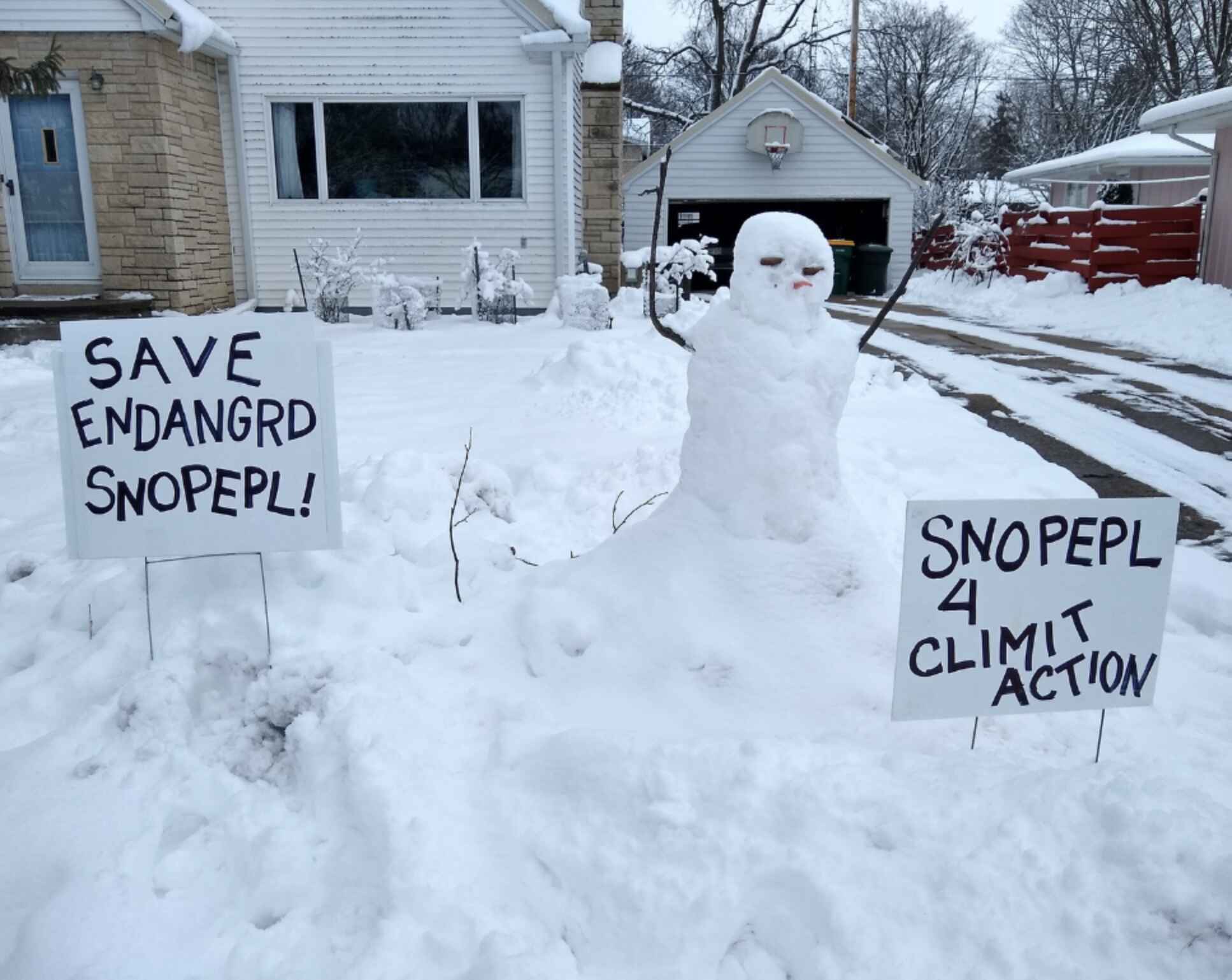Why is it so warm this winter?
The winter weather we’re used to is disappearing.
Has it been getting warmer every winter where you live? Maybe the first snowfall is appearing much later than it used to when you were a kid. Or, you used to enjoy winter sports like skiing, ice skating and ice fishing that now have shortened seasons, or can’t be done at all. Or, winter weather where you live might be getting more unpredictable.
It’s not your imagination. Our winters are getting warmer every year. And it’s not just where you live, it’s around the world, all year long.
In fact, 2023 was the hottest year of temperatures ever recorded on Earth. When winters get warmer, it takes away the activities we love, threatens our family traditions, and destroys livelihoods. But worse, it means that our children and grandchildren won’t ever get to experience winter, unless we take steps to preserve it for future generations.
Is climate change causing warmer winters?
Burning fossil fuels creates carbon pollution that is causing the Earth to overheat dangerously and leading to extreme heat, record warmth in the winter, droughts, wildfires, and other extreme weather. The damage that’s already been done to the Earth is irreversible. There’s no way to get the winters we remember back. And, because we continue to produce carbon pollution, it will get worse, unless we take action to stop it.
Why is there less snow every year?
Hotter temperatures mean that more precipitation falls as rain than as snow. New studies show that snow has disappeared around the world since the 1980s. That’s particularly true in the United States, where the snowpack in the Southwest and Northeast has been declining by 10%-20% every decade. But changes are not uniform across the world, and some areas have experienced more snowfall as a result of climate change. The long-term trend for our overheating planet is towards less snow.
How worried should I be about these odd weather patterns?
Very worried. Unless we take action, our planet will continue to overheat, dangerously. Here are some of the impacts of warmer winters:
- Water shortages: Many communities rely on snowmelt to provide water for their needs. When snow turns into rain, the water runs off quickly and we can’t use as much of it. Many of us are going to experience water shortages in the future as a result.
- More wildfires: Snow melts slowly, keeping the soil and vegetation moist. Rain can run off quickly, leaving drier soil and plants, which are more susceptible to wildfires.
- The end of entire industries: Businesses that depend on heavy snow (like ski resorts, equipment and apparel, restaurants and lodging that cater to vacations) are all at risk from disappearing snowpacks.
- Disrupted natural cycles: Plants and animals that depend on seasonal changes may migrate to other locations or disappear entirely.
Consider supporting organizations like Citizens’ Climate Lobby and initiatives that aim to address climate change. Together, we can contribute to collective efforts in mitigating the effects of climate change.
Other potential negative impacts of warming winters
Goodbye peaches, plums, walnuts, and almonds?
Mild winters are having negative impacts on agriculture. Many crops require a certain number of “chill hours” (hours below 45°F) to properly develop and produce a good yield. With a warm winter, these chill hours may not be met, resulting in lower crop yields.
Additionally, a mild winter can also lead to an increase in pests and diseases that thrive in warmer temperatures. This can cause damage to crops and result in a decrease in production. Warmer winter temperatures in California’s Central Valley are already threatening stone fruits, walnuts and almonds that are eaten around the United States.
Environmental and economic consequences
A warm winter can also have environmental consequences. For example, a lack of snow and ice can lead to a decrease in water supply for areas that rely on snowmelt for their water source. Additionally, a mild winter can disrupt the natural cycles of plants, causing them to bloom earlier than usual, which can impact pollinators and other animals that rely on these plants for food.
A mild winter can also have a significant economic impact. For industries that rely on winter weather, such as ski resorts and winter sports, a lack of snow and ice can result in a decrease in revenue. This can also have a ripple effect on the local economy, as these industries often support other businesses in the area.
Can we reverse warming winters because of climate change?
No. We can’t reverse the damage that has already been done. But we can prevent more damage from happening by upgrading our energy to safe and clean energy.
What can I do to help climate change?
There are lots of ways to protect your community and the planet from warming winters.
One thing you can do is talk about climate change with your friends and family and let them know you’re worried about it. Most people who are worried about climate change don’t talk very much about it which makes the problem seem less urgent than it really is.
To work with other people in your community on solutions to climate change, join CCL. You’ll learn more about climate solutions, and meet with elected officials to seek their assistance in solving the issue.
Sign up to volunteer
By clicking Sign Up, you are agreeing to our terms of service and privacy policy. You can unsubscribe at any time.


